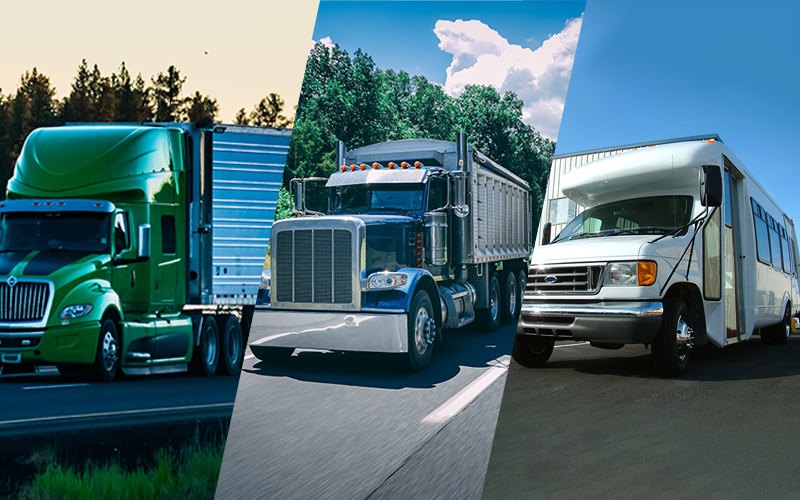You are stuck deciding between Class A vs Class B CDL? This is a common concern of many people when pursuing a commercial driving career. Each license allows drivers to operate specific vehicle types, and training varies.
To help you make the right decision, this post discusses the primary differences between Class A and Class B CDL. For a brief answer, from gross vehicle weight rating, vehicle type, and training required, to earning potential, Class A CDL prevails against Class B. By the end, you will have a clear idea of which CDL fits your career goals. Keep reading for more!
What is Class A CDL?
A CDL Class A is the most comprehensive of the commercial driver’s licenses, allowing drivers to operate large-scale vehicles, especially those with multiple units. According to the Federal Motor Carrier Safety Administration – FMCSA, a Class A license allows driving a vehicle combined with a gross combination weight rating of 26,001 pounds or more with the towed vehicle beyond 10,000 pounds.
With appropriate endorsements, a Class A CDL allows the operation of Class B and Class C vehicles. The versatility in applying for a Class A CDL license makes it one of the most popular options among drivers who want to work across various industries, particularly in long-haul trucking.

What is Class B CDL?
A Class B CDL authorizes drivers to operate any vehicle with one towing another, with a GVWR of 26,001 pounds or more, or to tow a vehicle that weighs no more than 10,000 pounds. Unlike Class A, which can involve a combination of units, Class B is normally single-unit vehicles without trailers.
With the right endorsement, a Class B license can also grant drivers the ability to operate Class C vehicles.

The difference between Class A and Class B CDL
Considering taking Class A or Class B CDL? Here is the detailed breakdown of differences between Class A vs Class B CDL to help you determine your suitable license:
GVWR (Gross Vehicle Weight Rating)

- Class A CDL: At this level, drivers are allowed to operate vehicles that have a gross combination weight of 26,001 pounds or more, provided the vehicle being towed weighs more than 10,000 pounds.
- Class B CDL: Drivers can operate a single vehicle with a GVWR of 26,001 pounds or more and tow vehicles not exceeding 10,000 pounds.
Vehicles allowed

- Class A CDL: This is mainly intended for large combination vehicles. It also covers many other types of commercial motor vehicles with specific endorsements. According to different states, extra endorsements may be required. A Class A CDL also authorized the operation of the same vehicles that are covered in Class B. Generally, drivers can operate these vehicles:
- Tractor-trailers, popularly known as 18-wheelers or big rigs.
- Truck and trailer combinations.
- Large buses such as school, city, or tourist buses.
- Dump trucks with small trailers.
- Tanker vehicles.
- Livestock carriers.
- Flatbeds.
- Class B CDL: This typically involves single-unit vehicles that are not towing a trailer or those towing less than 10,000 pounds. Drivers often drive the following vehicles:
- School buses.
- Straight truck.
- Delivery truck.
- Garbage truck.
- Cement mixers.
- Farm machinery in certain states.
Required training

Both Class A and B CDL licenses require highly considerable training hours. However, the hours vary depending on the vehicles you operate.
- Class A: Generally requires 160 hours of training. Training involves larger, more complex vehicles. It would be best if you learned how to couple and uncouple trailers.
- Class B: Training is less than for Class B, about 80 hours in total. Single-unit vehicles, road safety, vehicle inspections, and hazard recognition are covered in the training program.
Potential earning

- Class A CDL: According to Indeed, the average annual salary of a Class A CDL driver in the United States is $82,326 while top earners earn more than $100,000 per year, which is 13% higher than the national average. However, salaries vary by location and experience.
- Class B CDL: The average compensation for a Class B CDL is around $67,000 annually, while the more skilled drivers earn upwards of $90,000. The entry-level positions usually start at around $50,000 annually.
FAQs
1. What is the difference between class A and class B?
There are four main differences between Class A and Class B CDL, including:
- Gross vehicle weight rating.
- Vehicles.
- Training requirements.
- Earning.
Carefully read our explanation above to understand the differences in each area.
2. What weight is a Class B CDL?
A Class B CDL is any vehicle with a GVWR of 26,001 pounds or more and towing vehicles of up to 10,000 pounds.
3. What weight is a Class A CDL?
A Class A CDL covers the operation of combination vehicles with a GVWR of 26,001 pounds or more, where the weight of the towed vehicles exceeds 10,000 pounds.
4. Which CDL is the highest?
Class A is the highest CDL because it allows the holder to operate all those vehicles falling under Class B or C, plus large tractor-trailers and combination vehicles.
Final thought
Now you understand all the differences between Class A vs Class B CDL. Choosing Class A or Class B depends on your career goals and the type of vehicles you wish to operate. Class A can offer wide opportunities for long-haul tracking and combination vehicles, while Class B is ideal for drivers who want to drive single-unit vehicles. Both licenses boast lucrative careers, so it is crucial to choose the one that identifies with your professional aspirations. Leave a comment or contact us if you have any questions related to this topic. We are always willing to help!



